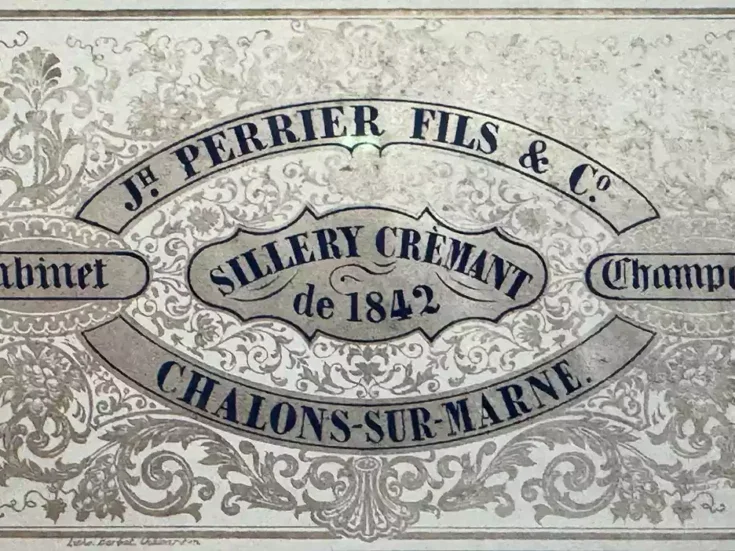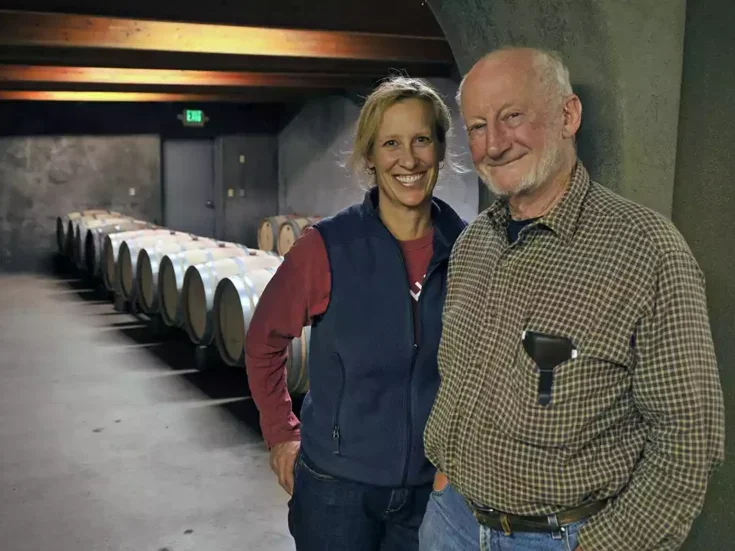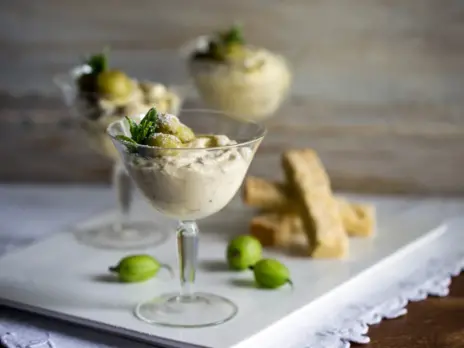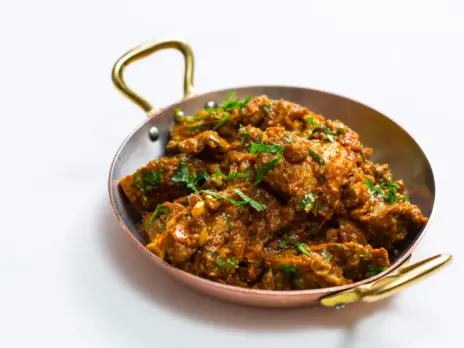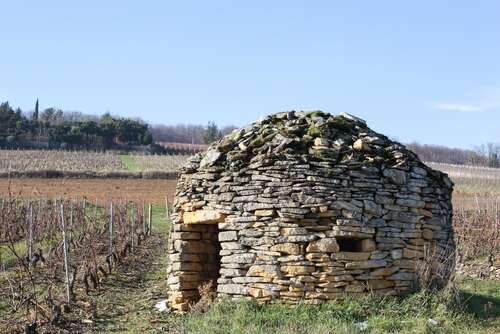
BEAUJOLAIS
MOULIN-À-VENT
CHATEAU DES JACQUES
Moulin-à-Vent Clos du Grand Carquelin
A coffee note on both nose and palate, which may be the oak. Plenty of red-plum fruit and spiciness combine with robust tannins, which add freshness and sappiness, but they are little rustic. Quite tart to finish. It’s certainly hearty. Stereotypical Moulin-à-Vent. 2026–29. 84
DOMAINE LABRUYÈRE
Goodness me, there is abundance of ripe, sweet fruit here and the alcohol levels hit 15%. Luscious wines. I really liked the super-svelte Le Clos, which glides on a gorgeous satin texture, although hang onto your hat, as this, too, is 15% ABV.
Moulin-à-Vent Les Carquelin
Ripe, sweet, blueberry-fruit aroma. Packs an energetically fruity punch on the nose and attack, but refines across the palate, where more focus is apparent. Supple-smooth tannins, with a touch of chicory freshness. It has more restraint and dimension than the Champ de Cour below. Late-2025–30. 87–88
Moulin-à-Vent Champ de Cour
Quite bullish and straightforward. From the ripe aroma, this dives into a super-sweet-fruited and juicy palate, full and ample, softly fleshy and succulent. It’s just lightly underscored with a touch of stem, which is appealing, and goes on to contribute a faint twist of herbal freshness to the finish. Very ripe. Late-2025–30+. 86
Moulin-à-Vent Les Clos (Monopole)
Rich, flowing, and satin textured. An intense blueberry ripeness, sweet, but not opulent and so very svelte. The texture is the defining feature. For Moulin-à-Vent, this is super-silky, very quiet, and really quite persistent. Excellent Moulin-à-Vent. 2026–35. 90
Moulin-à-Vent Coeur de Terroirs Vieilles Vignes
Super-ripe, plummy fruit on the aroma and attack, with an exotic, spice-market perfume on the palate. It’s full-bodied, soft, and a bit squidgy, but undoubtedly packed full of opulent fruit. Very accessible, this can be opened as soon as bottled. Late-2025–30. 85
CHÂTEAU MOULIN-À-VENT
Owner-manager Edouard Parinet started harvesting in Moulin-à-Vent on September 5. “The real chance that we had—and the one that makes Beaujolais a great region for growing in 2023—is that we could harvest before heavy rain in mid-September. The best terroirs in 2023 were the soils with granite sands and colluvial clays—lieux-dits such as Rochelle, Raves, Thorins, and Moulin-à-Vent. They were less affected by the heavy rains in the spring. In the lower part of the appellation, there was more disease.
“We did a lot of whole-bunch—on average, 50% this vintage—because we had a good amount of juice in the grapes and the stems had good ripeness.”
“2023 is a ripe vintage with elegance. As we had a good amount of rain in May and June, the wines are round and supple. If I had to choose comparable vintages, I would say 2022 for its ripeness and 2018 for its roundness.”
Edouard Parinet is making sophisticated and layered Moulin-à-Vent with well-managed textures.
Moulin-à-Vent Champ de Cour
Supple texture and succulent fruit up-front; the full and generous mid-palate is underpinned with a decent structure. It has some substance. There is a light bite of tannin and a fresh charcoal bitterness, which extends the palate to fairish length. It’s a good representation of Champ de Cour, and I like the fact that it doesn’t finish with sweetness. 2026–32. 86
Moulin-à-Vent Clos de Londres
Rich, for sure, but compact and dense. This has tension and lithe, energetic muscularity. It combines medium-full body/ripeness with freshness. It punches into a savory and persistent finish, with a hint of sapidity to finish. Punches above its weight. Very good indeed. 2026–35. 90
Moulin-à-Vent Les Grands Savarins
Château du Moulin-à-Vent have a 0.76ha (1.86-acre) parcel within Les Caves which they call Les Grands Savarins. After the exuberance of La Rochelle, this is much more introverted. Ripe, certainly, but savory, too, and quite buttoned up. It is fine-boned, with a high-line, more mineral palate and slightly severe, herbaceous and salty finish. 2026–32. 88–89
Moulin-à-Vent La Rochelle
In the lieu-dit of La Rochelle, which Edouard Parinet calls Petit Garennes, because of the rabbits that burrow here. Ripe, raspberry-coulis on the attack. All the exuberant richness is squeezed through the palate, which contains it to a tight line and propels it into the finish, which fairly fizzles. Yummy. You could drink this immediately or keep it. 2026–32. 88
Moulin-à-Vent Les Vérillats
Les Vérillats is east-facing, at 300m (1,000ft), with thin granitic sands. Supple, velvety texture. This has luscious black-cherry richness and a sumptuous, bitter dark-chocolate character. Alluring up-front, certainly, although as it travels across the palate it gains more herbal, slightly stemmy notes and a decidedly cooler character on the finish. When I tasted this, it was the least integrated of the wines—both quite rich and yet stemmy. I would expect it to gain in precision and tension and for the score to increase. Late-2025–30+. For now, 87
DOMAINE DES PIERRES ROSE
Well-structured and well-balanced wines from Thibault Liger-Belair, who was drawn to Moulin-à-Vent having studied there. He established this estate in 2008. “All my parcels are around the windmill. The soil is silt with granite and sand.” He does not do a carbonic maceration. “I do exactly the same work in the vines and the same vinification as for the Côte d’Or. So, I also use some whole-bunch here.” But he points out that whole-bunch is different for Gamay than for Pinot Noir, because the stems are thinner and lighter. “I am more interested in the enzymatic fermentation in the berry in the Gamay than in the stem.” There is never new oak for his Moulin-à-Vent.
He described the conditions in 2023 thus: “The fruit was very ripe, but we had some rain, so we again had black rot, which we have had for five years now, and which takes 30% of the crop. August and September were quite dry—there was just a little rain two weeks before harvest. 2023 was ripe and better balanced than 2022. There is more freshness. The sugar was the same, but the acidity was a bit higher, as there were fewer heatwaves in 2023, and we had more malic acidity. We did less during the vinification—just three punch-downs during the whole cuvaison. It is a vintage just to follow and not to do something with immediately. It is one of the best vintages I have produced since I started. The 2023s will need six months longer in barrel. My goal is not to make Beaujolais to be drunk quickly. I want to recreate the wines they made at the beginning of the 20th century. Everything changed after World War II, but I want to go back to the history of this appellation when the wines had great aging potential. There is more ripeness and body in Beaujolais than in Burgundy in 2023, with lower yields, around 25hl/ha, although we never have more than 30hl/ha here.” 2023 Beaujolais has a balance like 2019.”
Moulin-à-Vent Champ de Coeur
From a south-facing lieu-dit, with deep, clay-rich soil: “It is silty clay, so there is never any hydric stress. Unlike La Roche, this always continues to photosynthesize.” It is also in a dip, so more sheltered. This is the biggest wine. A rounded and generous, sumptuous, and looser-knit structure, with light creaminess to the texture. Much more airy and open on the palate, a little bitter on the finish. I asked about this, and Thibault replied that he uses the finest grain of oak, “so we have more oxygenation to break these tannins and create more length in the wine.” 2027–32. 86
Moulin-à-Vent La Roche
From a lieu-dit at the top of the hill, 50m (165ft) from the windmill, where there is not much topsoil, just 20cm (8 inches) of pink granite. Fine, juicy, and vibrant, with minerality and tension. This is my favorite. 2027–32. 87–88
Moulin-a-Vent La Rochelle
Thibault described the soil in this south-facing parcel as “pink sand with a little blue granite, lying just behind the Château de Moulin-à-Vent, so more protected. It is less windy here, while La Roche is colder, and this is the big factor the wine. So, I use 50% whole-bunch to compensate for the maturity of the south-facing and warmer exposition.” Succulent and juicy. A richer palate, with darker fruit, spice, and some crunchy freshness to finish. It is 14% ABV, while La Roche is 13.5%. 2027–32. 87
DOMAINE DE ROCHGRÈS
Another of Albert Bichot’s estates, which has 5.5ha (acres) in Rochgrès, where the soil is derived from the pink granite and the aspect is southeast. The vines are venerable, between 80 and 100 years old.
Moulin-à-Vent Rochgrès
This had 30% whole-bunch, aged 60% in stainless steel, and 40% in 350-liter barrels, 10% of which are new. Bottled in the summer following the vintage. Super-ripe plum, slightly jammy aroma. The softly textured fruit palate is generous, with baked, black-cherry fruit. A spicy, exotic, fruit-driven, and accessible Moulin-à-Vent. 2025–26. 83
FLEURIE
DOMAINE LAFARGE-VIAL
Frédéric Lafarge recalled that they had a lot of rain but good phenolic maturity and made 34hl/ha, which is a good quantity for them. Harvest began on September 6. All was destemmed in 2023. The wines averaged pH 3.45, were aged in foudres, and bottled at the end of November 2024.
“It is a fabulous terroir in Fleurie,” said Frédéric Lafarge, “but so difficult to work!” Fleurie La Joie du Palais is plowed by horse, as it is very steep, and by winch where the slope is 50%. The domaine is certified biodynamic (by Demeter).
Côte de Brouilly Bruhlie
From blue stone soil and a southerly exposition. Muscular, rich, and dense. Fuller bodied. Black fruit, with sapidity on the finish. 2027–32. 85–86
Chiroubles
There is plentiful ripe and sweet red fruit here, with a juicy finish. 2025–28. 82
Fleurie
From Bel Air and Cercillon, on a southeast-facing slope with pink-granite soil and old vines between 55 and 65 years old. Aged in 600-liter and 350-liter barrels. No new oak. Pretty floral aromas and a red-fruit palate, with a light snap of tannin. A little crunchy. Delicate, with a nice freshness to the finish. 2026–30. 84
Fleurie La Joie du Palais
From pink granite with a very sandy texture. “Always very round tannins,” says Frédéric Lafarge. This is light and straight. Fresh and pure, with a fine texture to the tannins and a light, salty finish. Wafts lightly across the palate. 2026–30. 85
Fleurie Clos Vernay
From granite and quartz and 50-year-old vines. Much more compact, with good tension. It snaps and crackles. Lots of energy and a shivery, sparkly minerality. Good indeed. 2026–32. 86
BROUILLY
MARC-ANTONIN BLAIN
Marc-Antonin found the season in Brouilly “similar to Burgundy, hot and dry over summer.” This was picked on September 7, and the grapes were transported by refrigeration truck to Chassagne, where they were sorted on the table. The fermentation and the aging take place in wooden tank until April following the harvest. Marc-Antonin remarked, “The wine was very pleasant to taste all through the aging period. 2023 is an attractive vintage for Brouilly.”
Beaujolais Brouilly
Succulent, spicy, red-plum fruit. A gentle palate, with soft tannin, while the light spritz gives lift to this 14% ABV wine. Affable. 2024–26. 83
2023 Burgundy: A guide to the villages and vineyards
2023 Burgundy: Chablis with a sunny disposition
2023 Burgundy: Chablis tasting notes
2023 Burgundy tasting notes: Côte de Nuits—Marsannay and Fixin
2023 Burgundy tasting notes: Côte de Nuits—Gevrey-Chambertin
2023 Burgundy tasting notes: Côte de Nuits—Morey-St-Denis
2023 Burgundy tasting notes: Côte de Nuits—Nuits-St-Georges
2023 Burgundy tasting notes: Côte de Beaune—Beaune
2023 Burgundy tasting notes: Côte de Beaune—Pommard
2023 Burgundy tasting notes: Côte de Beaune—Volnay
2023 Burgundy tasting notes: Côte de Beaune—Meursault
2023 Burgundy tasting notes: Côte de Beaune—Monthelie and Auxey-Duresses
2023 Burgundy tasting notes: Côte de Beaune—Puligny-Montrachet and St-Aubin
2023 Burgundy tasting notes: Côte de Beaune—Chassagne-Montrachet
2023 Burgundy tasting notes: Côte de Beaune—Santenay and Cheilly-lès-Maranges
2023 Burgundy tasting notes: Côte Chalonnaise
2023 Burgundy tasting notes: Mâconnais

